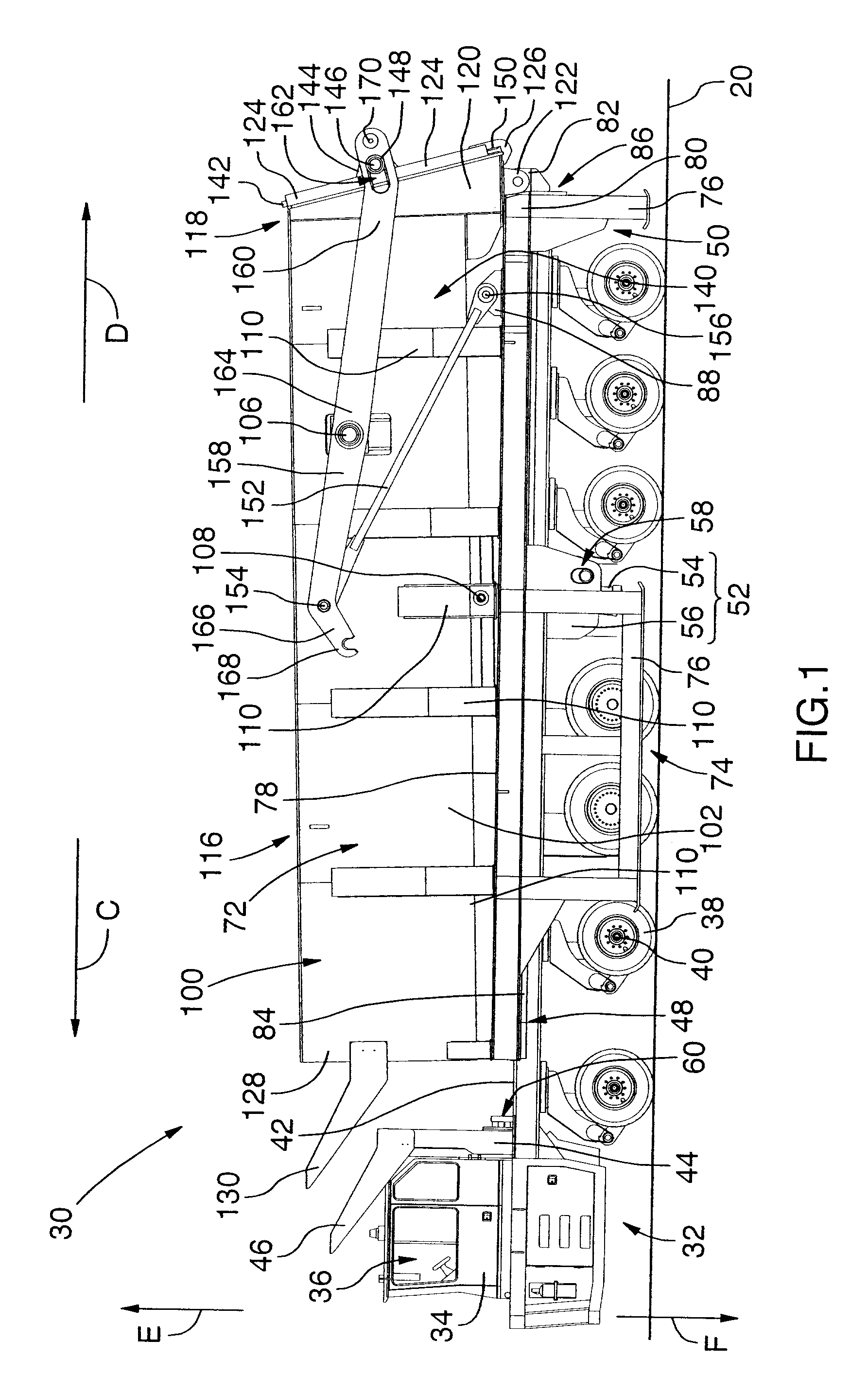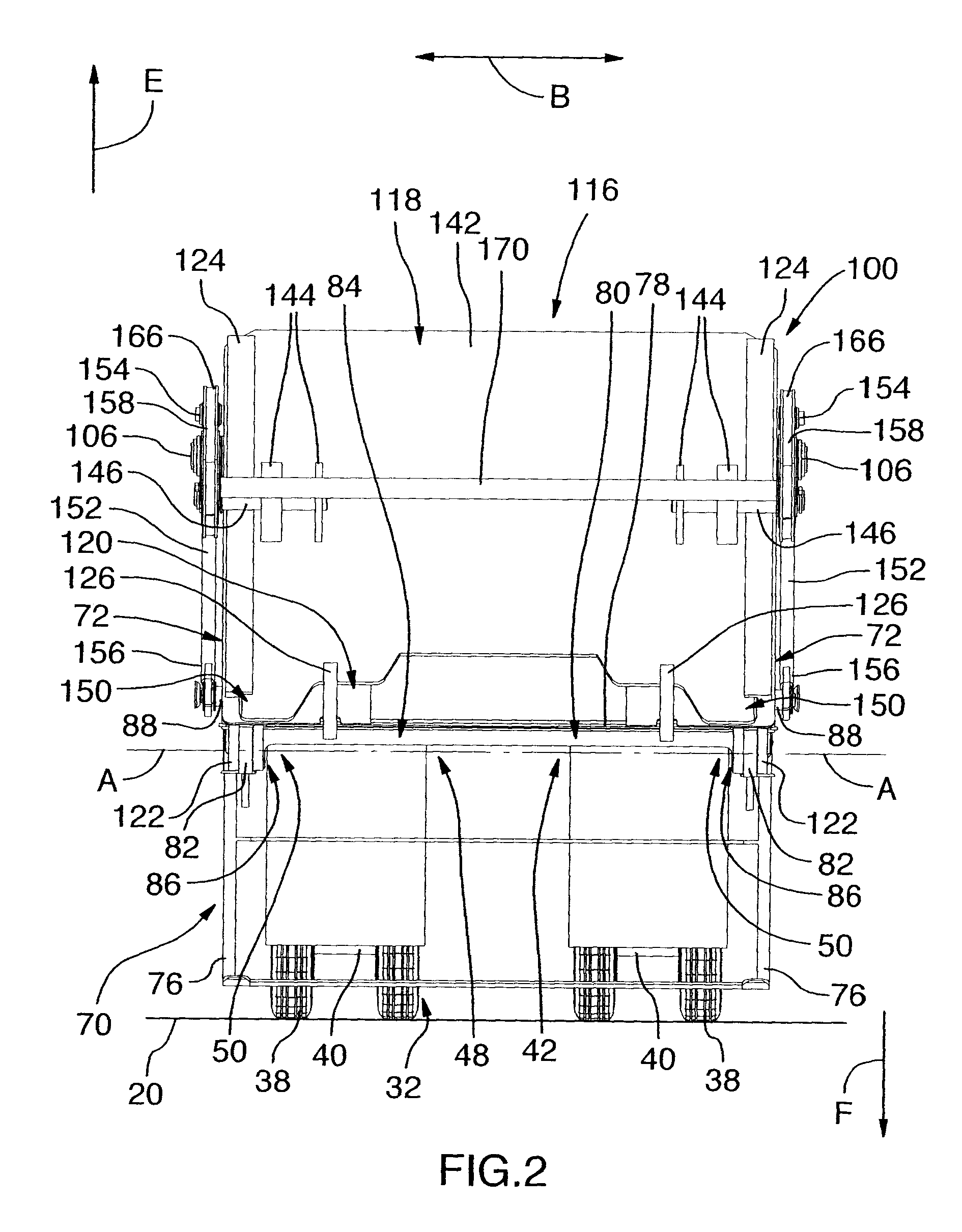Slag transport and dumping apparatus and method
a technology of dumping apparatus and slag, which is applied in the direction of transportation items, blast furnace components, blast furnaces, etc., can solve the problems of requiring a great amount of care for handling such materials, causing great harm, injury, and even death to persons coming into contact, and a bit of problematic to safely dispose of such by-products
- Summary
- Abstract
- Description
- Claims
- Application Information
AI Technical Summary
Benefits of technology
Problems solved by technology
Method used
Image
Examples
Embodiment Construction
[0075]Referring now to FIGS. 1 and 2 of the drawings, there is shown a slag transport and dumping apparatus 30, according to a preferred embodiment of the invention, which may be used to transport high temperature slag 22 over the ground 20 from a steel making furnace (not shown) to a slag dumping area (not shown). The apparatus 30 includes a transport vehicle 32, a pallet 70, and a container lifting mechanism 52.
[0076]The transport vehicle 32 includes a front cab portion 34, wheels 38, and a rear transport bed 42. The front cab portion 34 substantially encloses an interior seating compartment 36 which is preferably sized to accommodate a driver (not shown). The wheels 38 are supported on axles 40 and are adapted to rollably engage the ground 20. As best shown in FIG. 7, the rear transport bed 42 includes a front bed wall 44 and a pallet interface portion 48. The front bed wall 44 is preferably provided with a cab awning 46 that extends at least part-way over the front cab portion 3...
PUM
| Property | Measurement | Unit |
|---|---|---|
| dumping angle | aaaaa | aaaaa |
| temperature | aaaaa | aaaaa |
| temperature | aaaaa | aaaaa |
Abstract
Description
Claims
Application Information
 Login to View More
Login to View More - R&D
- Intellectual Property
- Life Sciences
- Materials
- Tech Scout
- Unparalleled Data Quality
- Higher Quality Content
- 60% Fewer Hallucinations
Browse by: Latest US Patents, China's latest patents, Technical Efficacy Thesaurus, Application Domain, Technology Topic, Popular Technical Reports.
© 2025 PatSnap. All rights reserved.Legal|Privacy policy|Modern Slavery Act Transparency Statement|Sitemap|About US| Contact US: help@patsnap.com



